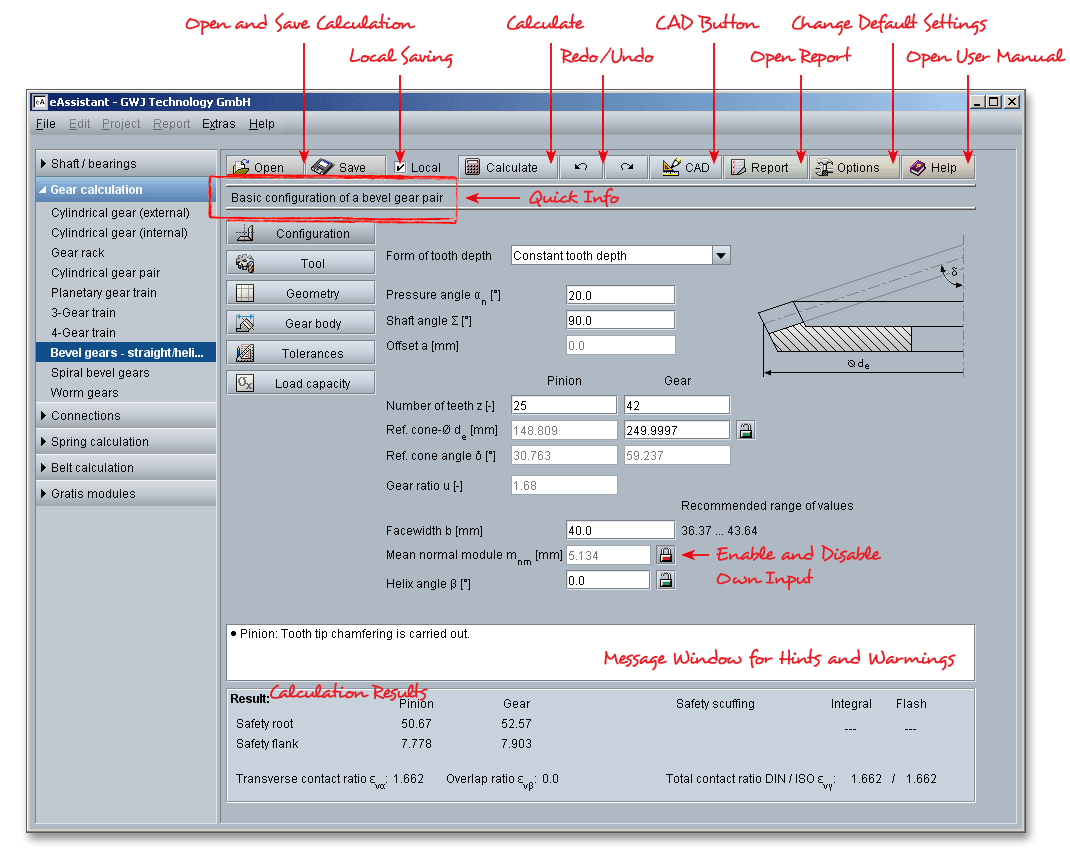

If so, then the portion of tooth below the base circle will not be an involute and may interfere with the tip of tooth on the mating gear, which is an involute. Interference - The involute tooth form is only defined outside of the base circle. The tooth dimensions are defined in terms of the module m. Standard, full-depth gear teeth have equal addenda on pinion and gear. The dedendum is slightly larger than the addendum to provide a small amount of clearance between the tip of one mating tooth (addendum circle/outside diameter) and the bottom of the tooth space of the other (dedendum circle/inside diameter). RMIT University - Thierry Perret-Ellena mail: The tooth height is defined by the addendum (added on) and the dedendum (subtracted from), which are referenced to the normal pitch circle. You can solve this problem using constraint tools. If not, you probably missed one or more end points during the selection. The curve should be green (fully constraint). You should double click the last point to end the curve selection. Click The Spline icon and select the strings end points. The strings lengths are respectively equal to 2*3.445, 3*3.445 and 4*3.445 RMIT University - Thierry Perret-Ellena mail: Repeat the steps described above for the next 3 strings. The strings length is equal to the arc length over this section. Select both the line and the base circle with Ctrl and click Constraints defined in Dialog Box - Tick on tangency and click ok to complete - Click Constraint icon and give a length to the string Select the axis tool and click on the axis end point as starting point. A tangent to the involute is always normal to the string, which is the instantaneous radius of curvature of the involute curve. RMIT University - Thierry Perret-Ellena mail: In order to draw the involute, we need strings tangent to the base circle. the elements (lines, circles, points, curves) should be green. Keep in mind that your sketch should always be fully constraint.

For gear with greater diameters and modules, you may need more than 5 lines to create an involute that project above the outside diameter. The smaller the angle is, the better the spline curvature will be. The angle value is independent to the number of teeth and the circle diameters. Using constraint tool, create angle dimensions between each line => 10deg. The first should be vertical and they should all be coincident with the base circle diameter. RMIT University - Thierry Perret-Ellena mail: Click the axis icon and draw 5 lines as follow. Click Constraint icon and modify both diameters to the pitch and base circles diameter values Using Circles tool, draw 2 circles coincident with the point reference system In Sketch tools toolbar, deselect Snap to point option ĬATIA - Click File/New/Part, rename it Gearset 1 Pinion, Deselect Enable hybrid design and Click Ok - Select Sketch Icon and click the desired reference plane Base Circle Diameter pinion and gear: = cos = cos =. Module: = - Pitch Circle Diameter pinion and gear: =, = = cos, where is the gearset pressure angle - =, where represents the number of teeth and is called the module and define the tooth size.Ģ RMIT University - Thierry Perret-Ellena mail: I want to draw a gearset with the following properties: The gear tooth must project both below and above the rolling-cylinder surface (pitch circle), and the involute only exists outside of the base circle. The cylinders from which the strings are unwrapped are called the base circles () and are smaller than the pitch circles (), which are the diameters of the original rolling cylinders. The involute of a circle is a curve that can be generated by unwrapping a taut string from a cylinder. The cycloid is still used as tooth form in some watches and clocks, but most gears use the involute of a circle for their shape. There is an infinite number of possible conjugate pairs that could be used, but only a few curves have seen practical application as gear teeth. RMIT University - Thierry Perret-Ellena mail: order for the fundamental law of gearing to be true (the angular velocity ratio between the gears of a gearset must remain constant throughout the mesh), the gear tooth contours on mating teeth must be conjugates of one another.


 0 kommentar(er)
0 kommentar(er)
